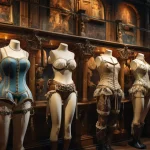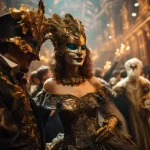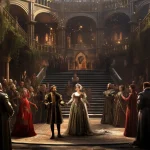
Armored Elegance: Unveiling Medieval Jousters’ Fashion
Picture this: a sun-drenched arena, the crowd’s roar, a clatter of hooves and armor. There’s a certain raw magnetism to the medieval jousting scene that transcends time. Now, let’s zero in on the stars of the show – the jousters. Cloaked not just in steel, but in an air of mystery and grandeur, these warriors were the epitome of medieval fashion and finesse.
In this journey, we’re peeling back the layers of Medieval Jousters’ Fashion. It’s more than just metal and might; it’s a complex tapestry woven with status, symbolism, and sheer style. These jousters, they weren’t just athletes; they were fashion icons in their own right, armored in a way that married the brutal demands of their sport with the high fashion of their times. So, buckle up. We’re about to embark on a historical ride, delving deep into the intricate world of armored elegance, where every plate of metal and stitch of fabric tells a story of power, prestige, and panache.
The Essence of Medieval Jousters’ Fashion
Armor as a Fashion Statement
When you think of medieval jousters, you might just picture a knight in shining armor, but let me tell you, there’s a whole lot more to it. The armor these guys wore? It wasn’t just a hunk of metal thrown together. No, it was a meticulously crafted masterpiece. Think of it like the custom-tailored suit of the Middle Ages, but one that could save your neck in a joust.
These armors were forged from the finest materials available, and boy, did they vary. You had steel, leather, even gold trim for those who could afford the extra flair. Each piece wasn’t just protection; it was a canvas showcasing wealth, skill, and personal style. And the attention to detail? Exquisite. From the helmet to the greaves, every inch served a purpose, both on the field and in showing off one’s status.
The Role of Heraldry
Now, let’s talk about the real showstopper in Medieval Jousters’ Fashion: heraldry. This wasn’t just about looking good; it was about telling a story. Each knight had a coat of arms, a unique design splashed across their shield and surcoat. These weren’t random doodles. They were intricate symbols of lineage, allegiance, and personal tales. Imagine riding into battle, your identity emblazoned for all to see – that was the power of heraldry.
Colors and Fabrics
Last but not least, the colors and fabrics. These weren’t chosen willy-nilly. Colors like deep reds, royal blues, and striking blacks were all the rage. They were bold, they made a statement, and they stood out in a crowd. The fabrics? Rich velvets, silks, and fine linens were common among those who could swing it. It was all about luxury and making a statement.
In the world of medieval jousting, your outfit was your identity. It was the medieval version of walking the red carpet, only with more armor and a higher chance of getting knocked off a horse.
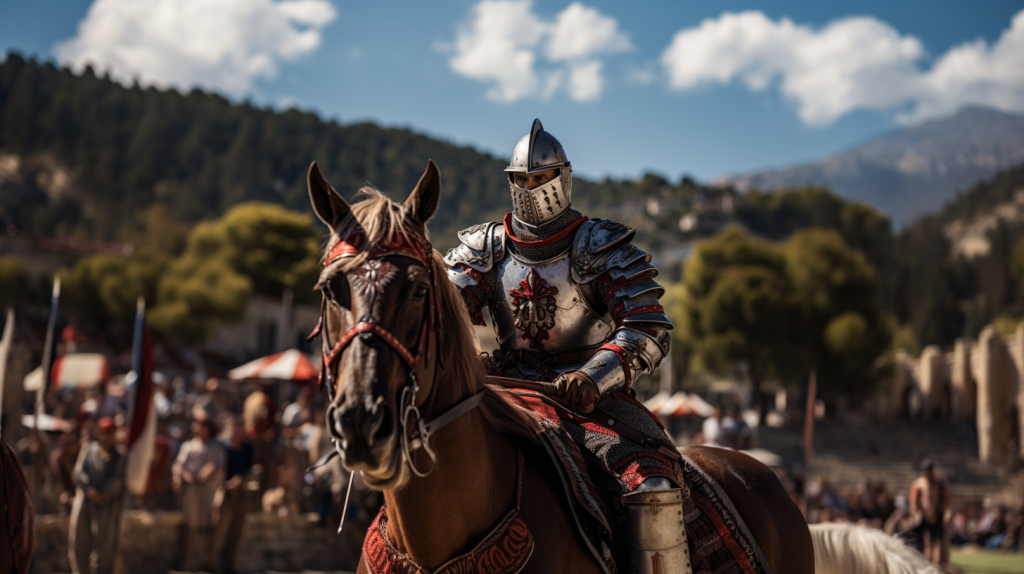
Beyond the Battlefield: The Social Implications
Fashion as a Status Symbol
Let’s shift gears and look at how these armored get-ups weren’t just for show or survival. In the world of medieval knights, what you wore in the arena was a loud and clear statement of who you were. This was high-end medieval society, where your armor spoke volumes about your status and bank account. The more intricate and flashy the design, the higher up you were on the social ladder. It’s like having the latest luxury car in today’s world, but instead of horsepower, you had actual horses and armor.
Tournaments as Fashion Shows
Think of medieval tournaments as the catwalks of their time. Knights would strut their stuff, showing off the latest in armor fashion. These events were more than just sports; they were social spectacles, where the who’s who of nobility came to see and be seen. It was here that fashion trends were set. A knight’s armor was his statement piece, his way of saying, “Look at me, I’m the real deal.”
The Influence on Common Fashion
Now, the influence of these tin-can trendsetters didn’t stop at the tournament grounds. Oh no, it trickled down to the masses. The styles and designs popularized by these jousters started appearing in everyday medieval wear. It’s like how a celebrity wears something on TV today, and suddenly, it’s the must-have item of the season. The knights set the trends, and the people followed, adapting those flashy styles into something more practical for daily life.
The Craftsmanship Behind the Armor
The Art of Blacksmithing
Alright, let’s roll up our sleeves and dive into the nitty-gritty: the art of blacksmithing. This wasn’t just banging metal on an anvil; it was a form of high art. These blacksmiths were the unsung heroes of the jousting world. They had to ensure that the armor was not only tough enough to take a hit but also flexible enough for all those knightly acrobatics. And the precision? It had to be spot-on. A small mistake could mean the difference between victory and a very bad day.
Embellishments and Decorations
But these blacksmiths weren’t just about functionality. They were artists. The armor they crafted was adorned with intricate patterns, embossing, and sometimes even gilded with precious metals. It’s like customizing your car, but instead of a paint job and rims, you’re adding flourishes to your breastplate and a crest to your helmet. This was where style met steel.
Evolution Over Time
Now, just like any fashion, Medieval Jousters’ Fashion changed over time. Early armor was all about practicality, heavy and cumbersome. But as techniques improved, so did the fashion sense. Armor became lighter, more articulated. It was the medieval equivalent of going from baggy jeans to slim-fit. By the end of the medieval period, you had armor that was not only effective but also a pleasure to look at.
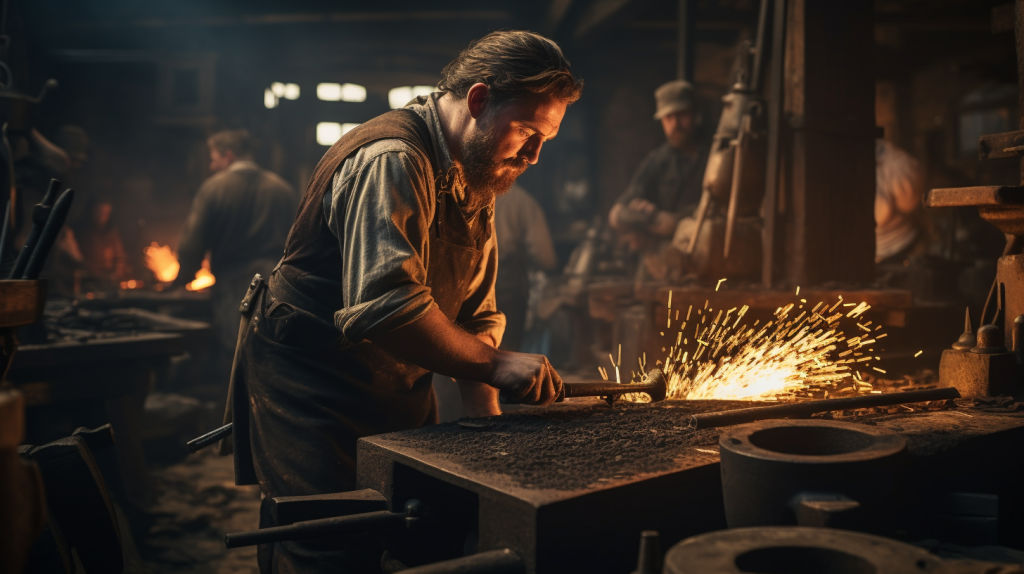
Personal Tales: The Jousters Behind the Armor
Famous Jousters and Their Fashion Choices
Now, let’s get personal and talk about the men under the metal. These weren’t just faceless knights; they were celebrities of their era, each with their own style and swagger. Take Sir William Marshall, for example, known as the ‘Greatest Knight.’ This guy was like the rockstar of jousters, famous not just for his skills but for his flashy armor that made him stand out in any crowd.
Then there’s the story of the Black Prince, a real legend in his own right. He had a taste for the finer things in life, including his armor. Decked out in blackened steel and velvet, he wasn’t just making a fashion statement; he was a walking, jousting embodiment of nobility and prowess.
Personalization and Customization
These knights didn’t just pick their armor off a shelf. No, they customized every bit of it. It’s like hot-rodding your car, but for battle. Every scratch, every dent, and every design had a story behind it, a personal touch. They’d tweak and tailor their gear to suit their fighting style, their status, and, of course, their personal flair.
In the world of Medieval Jousters’ Fashion, it wasn’t just about looking good; it was about showing who you were, your achievements, and your heritage. It was their brand, their signature, and in a world where your reputation was everything, this was how they made their mark.
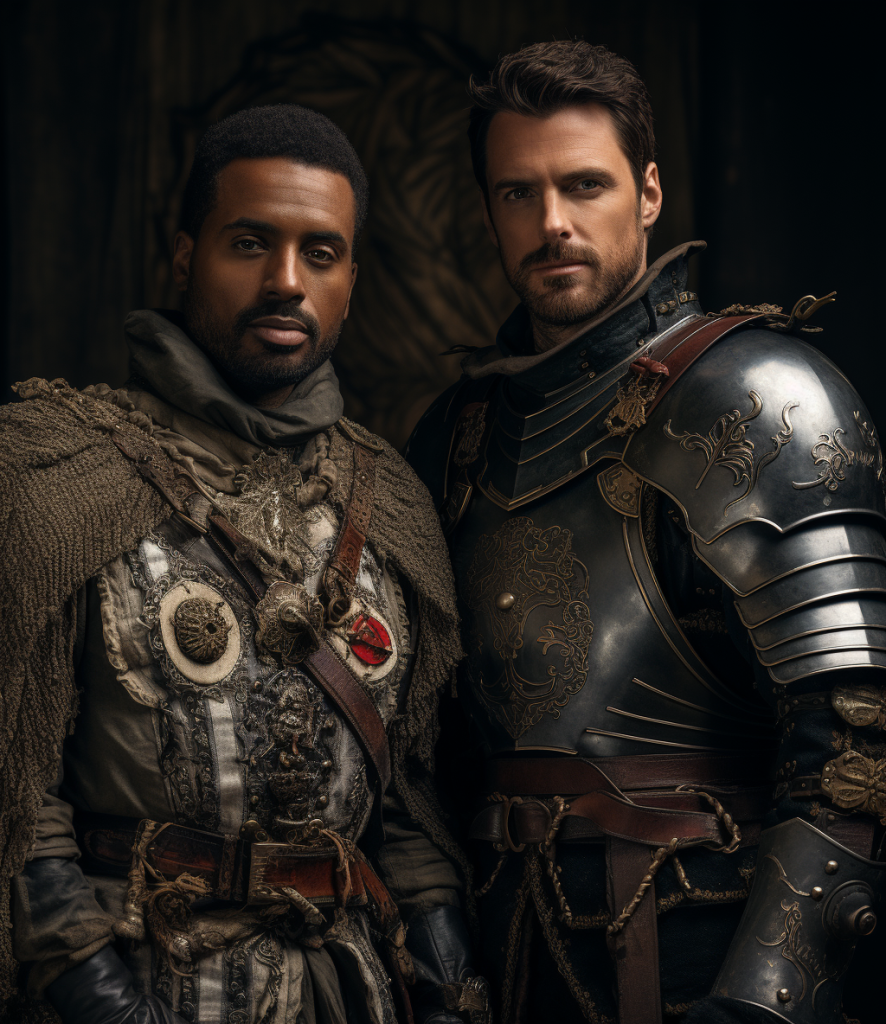
The Legacy of Medieval Jousters’ Fashion
We’ve journeyed through the glitz and glamour of medieval jousting fashion, but what about its lasting impact? These knights, in their steel and finery, didn’t just leave dents on each other; they left a mark on history and fashion that echoes to this day.
Influence on Modern Fashion
First off, let’s talk influence. The fashion world loves to borrow from history, and medieval jousters have been a gold mine. You’ve seen it on runways and in designer collections – those bold lines, metallic elements, and even the occasional breastplate-inspired dress. It’s a nod to an era where fashion was literally battle-ready.
Preserving History – Museums and Exhibitions
And if you’re itching to get a firsthand look at these historical fashion statements, you’re in luck. Museums around the world display these armors, not just as relics of war, but as masterpieces of design and craftsmanship. There’s something awe-inspiring about standing in front of a suit of armor, imagining the knight who wore it, the battles they fought, and the stories they could tell.
So there you have it. The world of Medieval Jousters’ Fashion wasn’t just about fighting; it was about flaunting, making a statement, and leaving a legacy that’s still admired centuries later. It’s a reminder that fashion is timeless, and sometimes, it’s even tougher than steel.
As we pull down the visor on our exploration of Medieval Jousters’ Fashion, it’s clear that these knights were much more than just warriors; they were icons of their era, trendsetters in a world where your image could be as powerful as your sword arm. From the blacksmith’s forge to the tournament grounds, every piece of armor, every color choice, and every heraldic symbol told a story.
In today’s world, where fashion and identity are more intertwined than ever, the legacy of these medieval fashionistas remains relevant. Their armor may have been designed for battle, but it also battled for attention, prestige, and status. It’s a fascinating blend of art, history, and style, a reminder of how our clothes have always been a canvas for expression.
So next time you see a piece of medieval armor, whether in a museum or in a movie, remember the tales it tells. It’s not just a protective shell; it’s a window into a world where fashion had to be as resilient as the people wearing it – a true armored elegance.



